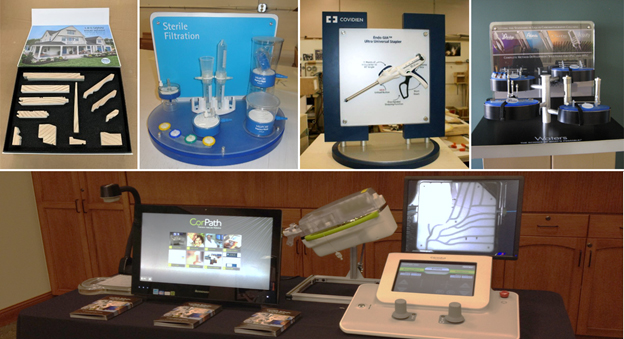Part 1: Strategies for Improving Your One-on-Ones
There’s always something new and exciting happening with our clients, and the exhibit world in general. While we’re certainly dealing with a lot of unforeseen events these days, this is really just another opportunity to try new things; maybe go out on a limb a lot further than you would have, even two months ago. The ideas here will provide you with some action items to work on now, so you can hit the ground running when the time is right.
Solution 1: Improving Your One-on-Ones
One-on-one engagements, sales calls, presentations—whatever you may call them. In the past, these meetings were perhaps driven by marketing and sales joining together. But, consider the benefits that your own event experience can add to this mix. They might look a little different than they did a few months ago, considering people wearing masks and sitting six feet away, but, either way, we believe that the key thing is: don’t be boring. Don’t send your reps back out there with the same old stale sales decks. It’s time to up your game. Now, that might mean some improved digital tools, but also consider creating cool displays for them to use in the sales process.
We know that we can’t meet face-to-face yet, but we can warm up our prospects with a unique and exciting mailer right now. This can be something thoughtful and poignant to catch their attention, or it might be part of a face-to-face strategy that is for a meeting that is still yet to come.
A quick analogy: We all get advertisements, promotional pieces and things like this in the mail all the time, and a lot of the mailers will include a little description from the sales rep. Have you ever checked the bottom to see if there’s an actual signature with that description instead of a rubber stamp copy?
The idea here is that you want to be the real signature. You don’t want to be the rubber stamp.
To achieve this, you need to first think about yourself (as the company/brand) and how you visually want to represent yourself and the company so when the piece arrives, your audience instinctively knows what it’s about. Being able to deliver something that’s personalized and custom as well as informative is a great way to ease back into these one-on-one meetings.
Looking at the following examples, the goal is to use these ideas and springboard them forward for your own industry needs:

(Note: The visuals presented here are all things that BlueHive as a company have produced.)
Top Left Image:
This simple promotional mailer is a branded sample box that can be mailed directly to a prospective client. Think of this type of mailer as a self-contained unit with images, samples, and perhaps even printed collateral.
Top Middle & Right Images:
These are more complex medical device mailers with specific environments that are tailored to the specific product. With graphics and a fine attention to detail, they can emulate real world scenarios that would normally be very difficult to display.
Bottom Image:
The big key here is scalability. Everything that we’re sharing should be able to be built upon for the future, so any investments that you’re doing now are worthwhile and usable for the long-term. The idea of taking these little portable displays and adding models, props, literature, and maybe some audio-visual techniques can help you turn your mailer into a table-top display or other smaller display.
When you do start to get those one-on-one sales meetings going again, you can bring small amounts of these selling tools together and create an entire display without a lot of exhibit materials.
Conclusion
We’re all tired of feeling like we’re stuck in this hurry-up-and-wait game. This concept offers several ways to get busy now with the leg work to implement a strategy as soon as you are allowed, helping you further increase exposure and drive sales. So, why not start smaller with mailers and portables and grow from there? No investment is wasted; nothing that you do now is wasted. Everything you do now can be used on any scale, later.
Check out Solution 2 from the BlueHive Engagement Playbook, here.